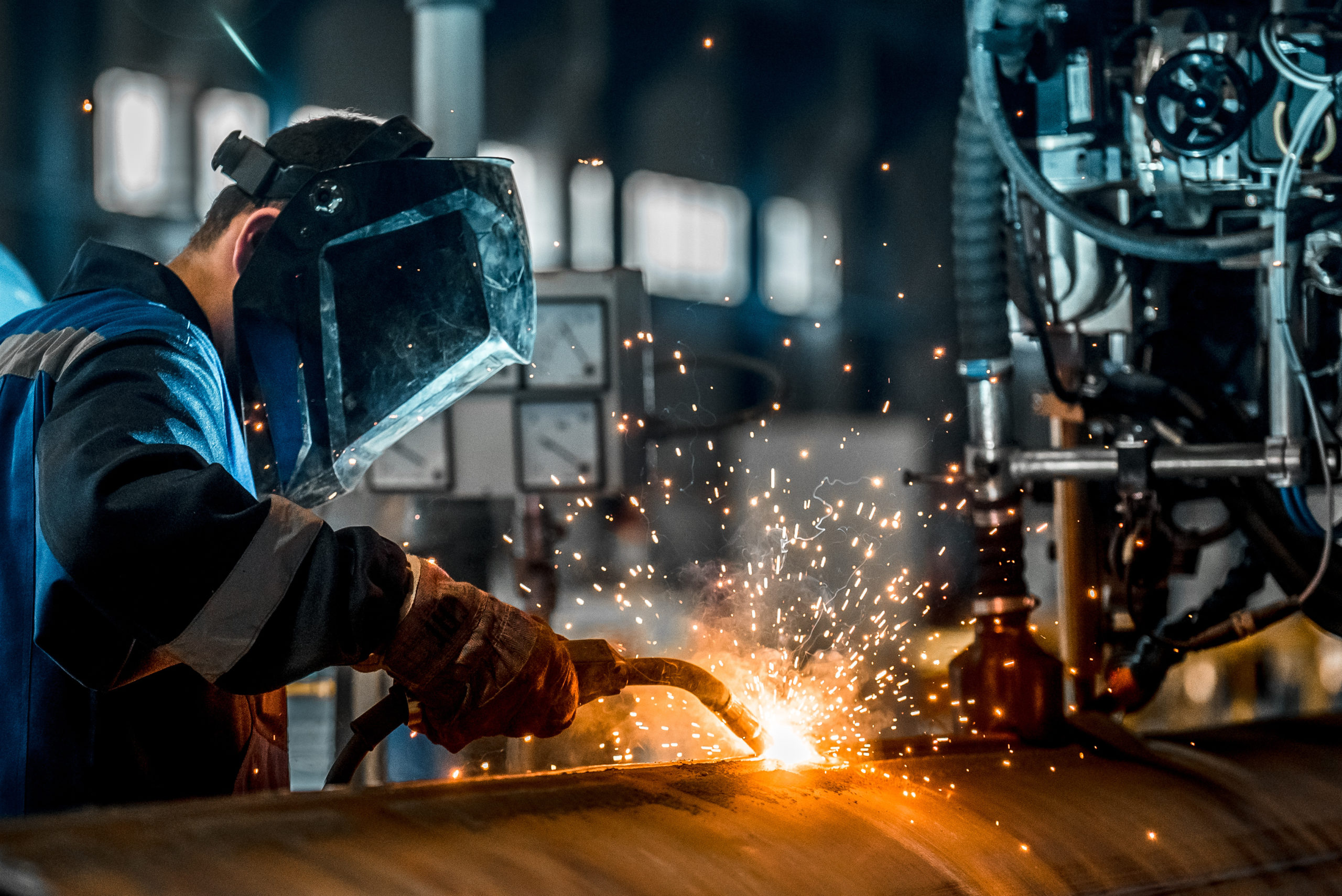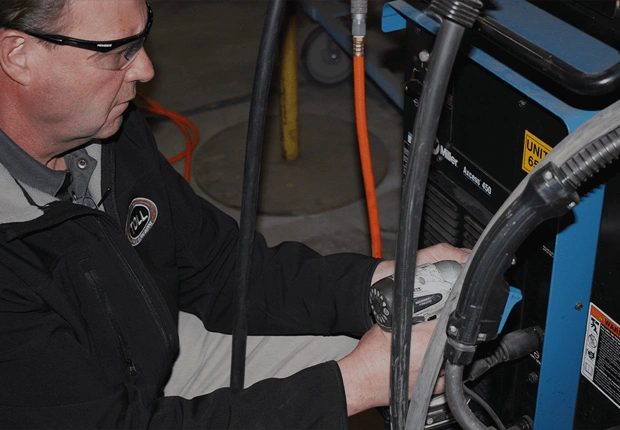All Regarding Welding: Secret Insights Into Techniques and Ideal Practices for Success
Welding incorporates a range of strategies, each matched for specific products and applications. Recognizing these methods, such as GMAW, SMAW, and TIG, is crucial for achieving excellent results. Moreover, the right tools and safety methods can not be ignored. As prep work and fixing play crucial functions in the welding procedure, understanding these aspects can greatly improve the quality of the last item. What are the essential variables that ensure a successful weld?
Comprehending Different Welding Strategies
Welding methods incorporate a variety of methods, each suited to specific applications and materials. Amongst the most common techniques are Gas Steel Arc Welding (GMAW), Protected Steel Arc Welding (SMAW), and Tungsten Inert Gas Welding (TIG) GMAW, also recognized as MIG welding, is prominent for its speed and convenience, making it excellent for slim products. SMAW, or stick welding, is preferred for its simplicity and performance in outdoor environments, especially with thicker metals. TIG welding uses accuracy and control, making it appropriate for complex work and non-ferrous steels (Welding). Each strategy has its distinct advantages and factors to consider, allowing welders to select the very best approach based upon the project's demands, product type, and desired outcomes. Comprehending these techniques is vital for successful welding
Essential Welding Devices and Devices
While numerous welding strategies require certain skills, the right tools and tools are just as important for achieving top quality results. Crucial welding equipment consists of welding equipments, which differ depending upon the method-- such as MIG, TIG, or stick welding. Safety gear, including handwear covers, aprons, and helmets, warranties safety and security and convenience during the procedure. Furthermore, components and clamps help secure materials in position, guaranteeing precision in welds. Consumables like welding rods, cable, and securing gas are additionally vital elements that influence the quality of the weld. Furthermore, devices such as grinders and cutters facilitate surface area preparation and post-weld completing, adding to a specialist end result. Buying high-grade tools inevitably improves the effectiveness and effectiveness of welding projects.
Security Practices in Welding
Correct security practices are necessary in the welding industry to secure employees from possible hazards. Welders have to use proper individual protective equipment (PPE), consisting of helmets with appropriate shading, gloves, and flame-resistant clothing. Adequate air flow is essential to lower direct exposure to dangerous fumes and gases generated during the welding process. Furthermore, employees ought to be learnt the right handling of welding devices to stop mishaps. Fire precaution, such as maintaining combustible products far from the welding area and having fire extinguishers conveniently available, are required. Regular examinations of devices and workspaces can help recognize prospective hazards before they bring about crashes. By adhering to these safety and security methods, welders can create a more secure working atmosphere and reduce dangers linked with their profession.
Preparing Products for Welding
Preparing materials for welding is an essential action that greatly affects the quality and honesty of the end product (Belgrade Fabrication). Correct prep work includes cleaning up the surfaces to eliminate impurities such as dust, oil, and corrosion, which can jeopardize the weld. Strategies such as grinding, sanding, or making use of solvents are typically used to achieve a clean surface. In addition, guaranteeing that the materials fit together well is necessary; voids can result in weak welds. It's additionally important to take into consideration the positioning and positioning of the elements, as this will impact the ease of welding and the last end result. Ultimately, selecting the ideal filler product and making certain compatibility with the base metals is crucial for achieving solid, durable welds
Tips for Getting High-Quality Welds
Achieving premium welds requires interest to information and adherence to best practices throughout the welding process. Proper joint preparation is essential, ensuring surfaces are clean and complimentary from pollutants. Picking the ideal filler material and welding method based upon the base metals is critical for perfect bonding. Preserving regular traveling rate and basics angle while welding can protect against problems and advertise harmony. In addition, controlling heat input is crucial; too much warmth can cause bending and damaged joints. On a regular basis evaluating the welds during the process allows for immediate adjustments if essential. Finally, using appropriate post-weld treatments, such as cleaning and stress and anxiety alleviation, can boost the sturdiness and stability of the weld, inevitably ensuring an effective result.
Troubleshooting Usual Welding Issues
Welding typically presents obstacles that can affect the high quality and stability of the end product. Typical issues such as porosity, irregular weld beads, and getting too hot can occur, each calling for specific repairing strategies. Understanding these issues is essential for welders to boost their skills and accomplish perfect outcomes.
Porosity Issues Described
Porosity can commonly be forgotten, it remains a critical problem in welding that can jeopardize the integrity of a completed item. Porosity describes the presence of tiny gas pockets within the weld bead, which can lead and compromise the joint to early failure. This issue normally occurs from pollutants, moisture, or incorrect securing gas coverage during the welding procedure. To reduce porosity, welders must verify that the base products are dry and tidy, make use of proper securing gases, and keep consistent welding parameters. Consistently checking the tools and environment can likewise aid determine prospective concerns before they materialize in the weld. Attending to porosity efficiently is necessary for achieving solid, durable welds that meet top quality standards.

Inconsistent Weld Beads
Inconsistent weld grains can substantially affect the top quality and toughness of a finished item. Numerous elements add to this concern, consisting of incorrect travel speed, wrong amperage setups, and inconsistent electrode angles. When the welder moves too promptly, a bead might appear slim and lack infiltration, while moving too gradually can create extreme build-up. Furthermore, using the incorrect amperage can result in either undercutting or too much spatter, both of which concession weld integrity. The welder's method, such as inconsistent lantern motion, can also result in irregular grain appearance. To minimize these problems, welders need to concentrate on preserving constant, regulated activities and making sure appropriate devices settings to attain harmony in their welds. Consistency is essential to accomplishing reputable and solid welds.
Getting Too Hot and Bending Issues
Extreme warm throughout the welding procedure can result in substantial overheating and contorting issues, impacting the architectural stability of the work surface. These troubles commonly materialize as distortion, which can endanger positioning and fit-up, making further assembly testing. Variables adding to overheating consist of the choice of welding parameters, such as voltage and travel speed, along with the sort of original site product being welded. To minimize these issues, welders must maintain consistent travel speed and appropriate warm input while checking the work surface temperature. Additionally, pre-heating or post-weld warm treatment can aid minimize anxieties brought on by fast air conditioning - Belgrade Fabrication. Routine assessment and adherence to best techniques are essential in preventing getting too hot and ensuring the durability and integrity of welded structures
Often Asked Questions
What Are the Career Opportunities in the Welding Market?
The welding industry uses diverse job chances, consisting of positions as welders, educators, examiners, and engineers. Experts can operate in production, building and construction, aerospace, and auto markets, gaining from solid demand and competitive incomes in various roles.
Just How Can I Enhance My Welding Speed Without Compromising Top Quality?
To enhance welding speed without sacrificing top quality, one need to practice reliable strategies, maintain equipment, enhance settings, and improve hand-eye control. Normal training and looking for responses can also substantially contribute to attaining much faster, premium welds.
What Accreditations Are Available for Welders?
Various accreditations exist for welders, including those from the American Welding Society (AWS), the National Facility for Construction Education and Research Study (NCCER), and different industry-specific companies. These credentials enhance employability and show skill proficiency.
Exactly How Does Welding Influence the Characteristics of Metals?
Welding affects the buildings of steels by changing their microstructure, which can lead to changes in hardness, ductility, and toughness. Warmth input and air conditioning prices during the process considerably impact these product attributes.
Can I Weld Dissimilar Metals With Each Other?
